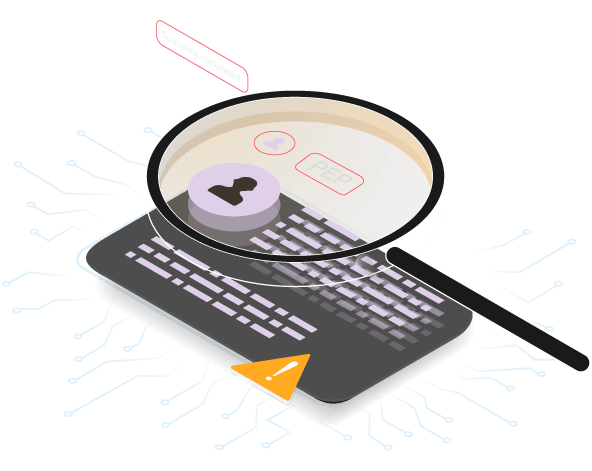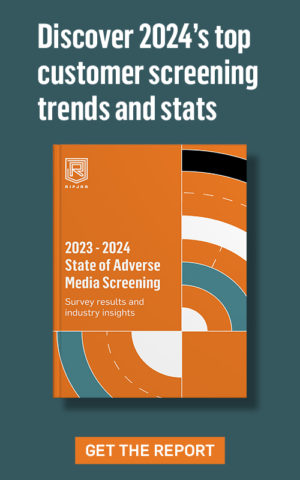As technology transforms the financial landscape, and criminal methodologies become more sophisticated, governments and authorities must address emerging risks by integrating suitable digital tools – a process known as digital transformation.
Given the scale of the challenge, the Financial Action Task Force (FATF) has characterised the digital transformation of anti-money laundering (AML) and counter-financing of terrorism (CFT) as a “necessity”, and President T. Raja Kumar has stated that the FATF will be “exploring the opportunities that technology can offer to improve AML and CFT efforts”. The ongoing digital transformation of the intergovernmental organisation will have consequences for firms in every corner of the world, which must adjust their compliance frameworks to meet new challenges.
The FATF has published a range of guidelines to help firms understand how it is achieving digital transformation. Let’s take a look at some of the key considerations, and explore what the process means for your AML/CFT compliance.
The Adoption of New Technologies
The FATF’s digital transformation emphasises both the integration of new technologies and “innovative ways to use established technology-based processes”. In this context, digital transformation refers to the holistic adoption of digital tools and methods, rather than the process of simply converting analogue data to digital content. The FATF’s approach to digital transformation focuses on the following areas:
- New opportunities: The FATF is working to identify opportunities to leverage “emerging and existing technology-based solutions” for AML/CFT innovation. Following research, the FATF published a report into the possible opportunities and challenges of new technology-based AML/CFT solutions.
- Data analytics: The FATF is exploring how technology can enhance the analysis of “large amounts of structured and unstructured data”. This focus includes data pooling and collaborative analytics which can make it easier to identify and mitigate money laundering and terrorism financing activities, and reduce false positive alerts, while protecting user privacy rights.
- Operational capability: The FAFT will examine ways in which operational agencies can “harness technology to strengthen their operational capability and resilience”. Focus will also fall on optimising the use of technology, enhancing communication and information-sharing, and removing barriers to digital transformation.
- Digital identity: Research suggests that reliable digital ID makes it easier to perform customer identification and conduct transaction monitoring. To this end, the FATF is exploring the benefits of digital ID for AML/CFT and for improving access to financial services.
Digital Transformation for FATF Operational Agencies
FATF operational agencies, which broadly refers to Financial Intelligence Units (FIU) within the FATF Global Network, have been integrating digital tools to enhance AML/CFT workflows and solve day-to-day challenges for years. Beyond the automated speed and accuracy of digitisation, the transformation trend reflects a desire amongst FIUs to take advantage of the following key benefits:
- Data utility: Digital transformation offers FIUs real time access to a wider landscape of data, stored in multiple databases. That access facilitates better comprehension of AML/CFT data and analysis of AML/CFT alerts.
- Data capacity: Digital transformation increases data handling capacity, with FIUs able to analyse larger volumes of unstructured data. By drawing from a larger volume of data, analysts are more likely to be able to observe connections between disparate suspicious transactions.
- Data analysis: In the face of increasing volumes of suspicious activity reports (SAR) and suspicious transaction reports (STR), the digital transformation process enhances the efficiency and quality of AML/CFT analysis, enabling FIUs to integrate advanced analytic tools, and mine data more effectively for patterns that indicate criminal activity.
- Emergent risks: By integrating innovative new tools, such as AI and machine learning systems, digital transformation offers analysts a better understanding of emergent AML/CFT risks and criminal typologies, and a better chance of spotting behaviour that does not correlate with established risk profiles.
- Alert management: Digital tools enable FIUs to better communicate and disseminate SAR information across departments, with enhanced data security and privacy protection. Similarly, digital tools make it easier to store, analyse and provide reporting feedback for STRs.
Digital Transformation for Law Enforcement
Like operational agencies, global law enforcement agencies are also adopting digital tools and technologies to help them detect and investigate financial crimes. The FATF has acknowledged the importance of digital transformation to law enforcement agencies and published a confidential report into the possible AML/CFT applications and opportunities of digital technology.
The FATF also published a public summary of the law enforcement report, which includes the following highlights:
- Alignment of vision: The FATF suggests that law enforcement stakeholders should align their vision for their digital transformation objectives. This means considering mid and long-term issues, such as internal priorities, available resources, and technological capabilities, and ensuring that all parties are able to buy in to proposed digital initiatives.
- Integrating digital tools: Law enforcement agencies should be clear on which digital tools they need to to get the most out of AML/CFT data, and how to use them. The integration of digital tools should follow a clear roadmap, matched with necessary resources, and supported by in-house management or third-party partners.
- Ethical considerations: The integration of new screening and monitoring technologies often creates ethical considerations, especially for personal data privacy and protection. The FATF suggests that law enforcement authorities should consider whether their digital transformation efforts align with existing data protection and security frameworks, and whether legislative amendments are needed to accommodate them.
- Investigative support: The FATF suggests that law enforcement agencies should understand which money laundering and terrorism financing crimes would be most impacted by the application of digital tools. Agencies should also consider how to roll out their digital initiatives most effectively, and whether to develop core digital tools in-house or acquire them from third parties.
Law Enforcement Intelligence
Digital tools enable law enforcement and other government organisations to maximise their use of valuable intelligence faster and more effectively. For example, AI-powered data fusion investigative tools, such as Ripjar’s Labyrinth Intelligence platform, enable the understanding of patterns across disparate complex data sets, deriving additional intelligence knowledge and undertaking collaborative reporting.
Those agencies can additionally utilise Ripjar’s Labyrinth Screening platform to enable searches for customers and counterparties while taking into account key characteristics, including mentions in the media or high risk jurisdictions, in order to identify suspicious activity more accurately.
The Future of the FATF’s Digital Transformation
The FATF has established the potential of new technologies to make AML/CFT measures “faster, cheaper and more effective”, and to enhance the implementation of the FATF Recommendations. While it explored the opportunities of data pooling, collaborative analytics, and data protection in 2020-21, in its Annual Report 2021-22, the FATF focused on advanced analytics, in particular machine learning systems, as a means to analyse financial intelligence, and better understand AML/CFT risks.
The specific benefits of machine learning technology include:
- Automated analysis of established customer data in order to distinguish suspicious transactions from normal financial activity.
- A reduction in the need for front-line human compliance intervention.
- Enhanced customer risk assessment and onboarding processes, along with improved customer experiences.
- Enhanced information exchange between AML/CFT counterparts.
- Adaptive learning processes which account for emerging criminal methodologies and changes in regulation.
Digital Transformation Compliance Solutions
Digital transformation represents a cultural change for the financial services community as much as a logistical one. Beyond seeking effective software systems to replace analogue processes, the FATF’s conception of digital transformation will require regulators and private sector firms to optimise their AML/CFT solutions by effectively harnessing the power of compliance technology – and taking advantage of the analytic possibilities of AI innovation.
In addition to delivering automated speed and accuracy, Ripjar’s Labyrinth Screening is designed to help firms meet the digital expectations of both the FATF and domestic regulators. Powered by cutting edge-machine learning technology, Labyrinth Screening is capable of fusing internal customer data with thousands of global data sources, including international watchlists, news stories, and corporate records, in real time, in over 20 foreign languages. Fully customisable to your firm’s compliance needs, Labyrinth delivers actionable financial intelligence in seconds, automatically extracting the most relevant risk data so that your firm can keep pace with criminal threats in a changing financial landscape.









